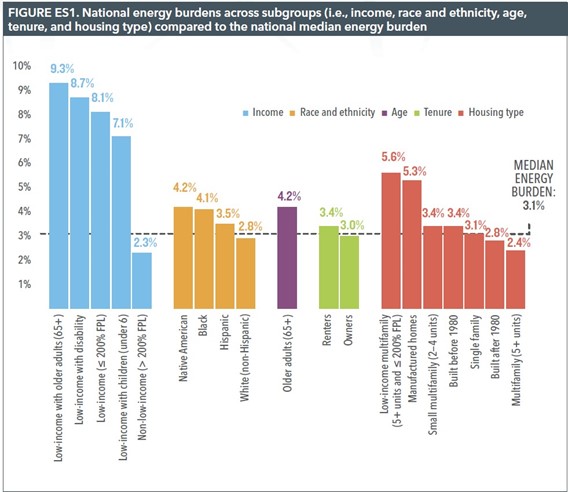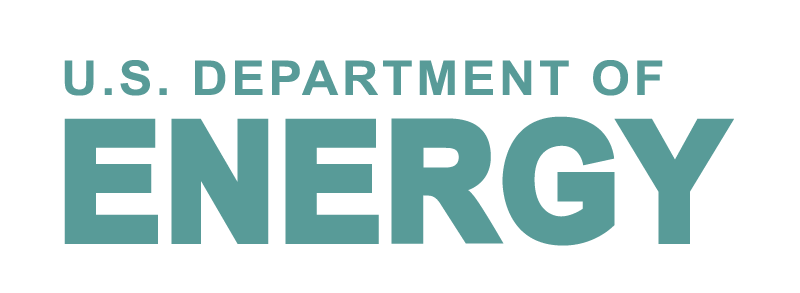GridWise® Architecture Council Blog
The viewpoints presented in this blog are the personal views of the authors who are members, associates, and friends of the GridWise Architecture Council. These viewpoints are opinions and do not necessarily represent the consensus of the Council, the endorsement of the Department of Energy, or those of the companies they work for.
Join the discussion on LinkedIn
Energy Equity in Decarbonization
Ahlmahz Negash

Over the next two to three decades, individuals, governments and institutions of all kinds will be feverishly working to decarbonize the energy economy. This clean energy transition requires trillions of dollars in investments. Many are calling for these investments to address clean energy goals as well as environmental justice and energy equity goals. In order for such an intersectional investment approach to be widely successful, the entire energy industry needs to coalesce around a shared understanding of energy equity and commit to standardized energy equity metrics in the same way that we commit to standardized reliability and safety metrics. Given the inclusion of increasing levels of local, state, and federal government’s equity provisions in clean energy policy, it is imperative that this topic be well-understood and appreciated industry-wide.

Defining Equity
“An equitable energy system is one where the economic, health, and social benefits of participation extend to all levels of society, regardless of ability, race, or socioeconomic status. Achieving energy equity requires intentionally designing systems, technology, procedures, and policies that lead to the fair and just distribution of benefits in the energy system1.” (PNNL)
Different institutions have varying definitions of equity, and energy equity. In general, those definitions broadly encompass the ability of all to access, afford, and share in both energy and non-energy benefits of the energy system. Two widely-accepted components of equity are distributional equity and procedural equity:
- Distributional Equity is the fair and just distribution of costs and benefits
- Procedural Equity is the inclusion and participation of individuals from underserved communities in processes and decision making
In addition to distributional and procedural equity, some energy equity practitioners also include Structural Equity (understanding and consideration of the underlying systemic causes of disparate outcomes) and Transgenerational Equity (consideration of the impact of decisions on future generations) to the defining features of energy equity2.
Recent Energy Equity Policies & Initiatives:
While the concept of energy equity is by no means new, its prominence in federal, state and local policies has certainly increased in recent years3. In 2018 Portland Oregon created, by local ballot measure, the Portland Clean Energy Fund, a “first of its kind” climate fund dedicated to advancing racial and social justice4. The following year in 2019, Washington State passed into law the Clean Energy Transformation Act (CETA), which among many things, requires utilities to ensure that all customers benefit from the transition to clean energy through: 1) the equitable distribution of energy and non-energy benefits, and 2) the reduction of burdens to vulnerable populations and highly impacted communities5. Equity screening provisions were also included in New York State’s Climate Leadership and Community Protection Act of 2019, including a target that at least 40% of State climate programs’ benefits flow to disadvantaged communities6. And in 2021, Illinois passed the Climate and Equitable Jobs Act, which among other actions, prioritizes clean energy investments, job training hiring, ownership, and new business creation for environmental justice communities and other target populations, including displaced fossil fuel workers7. Other State policies have also included energy equity policy provisions (including, Virginia, North Carolina, and Michigan) 8. On a Federal level, the Department of Energy’s Office of Economic Impact and Diversity is leading the Equity in Energy initiative, an effort to expand the participation of underserved communities in energy innovation, entrepreneurship, workforce partnerships and all DOE programs9. This Office has also been charged with leading the Biden Administration’s Justice40 Initiative—a plan to deliver 40% of the overall benefits of climate investments to disadvantaged communities10.
In addition to government policy actions, nonprofit and community organizations, are also advocating for equity in clean energy transition. Since 2013, Efficiency for All (EFFA), has brought together partners in affordable housing, energy efficiency and community development to increase States’ energy efficiency investments in underserved populations and sectors.
Measuring Energy Equity:
Among states, California has been a leader in the development of equity indicators to measure and map disparities to inform program and policy development11. A cursory review of utility and state energy equity plans reveals that the frameworks for applying an equity lens to energy remain inconsistent across agencies and entities. In 2021, the Energy Equity Project (housed in the Energy Justice Lab at University of Michigan School for Environment and Sustainability12 ) was established to develop the Equity Measurement Framework, the nation’s first standardized approach to collecting, tracking and reporting data on equity in clean energy policies, programs and investments13. If widely adopted, this effort could help advance energy equity by providing a transparent and efficient means of benchmarking and tracking progress.
A common indicator adopted across the vast majority of energy equity initiatives and practitioners nationwide is “energy burden”, the percentage of annual household income spent on utility bills. A 2016 ACEEE report on energy burden in some of the nation’s largest cities found that while average energy burden was 3.5%, low-income households experienced a median energy burden of (7.2%), African-American households (5.4%), low-income households living in multifamily buildings (5.0%), Latino households (4.1%), and renting households (4.0%)14. None of this is surprising given the known wealth and income disparities across racial groups in the United States. Communities with less wealth and income not only have less money to spend on energy bills but also have less money to afford housing with up to date efficiency measures, causing overall energy bills to be higher. A one-two punch if ever there was one! This same 2016 report found that “for low-income households and for multifamily low-income households, bringing housing stock up to the efficiency of the median household would eliminate 35% of excess energy burden, reducing energy burden from 7.2% to 5.9%. For African-American, Latino, and renting households, 42%, 68%, and 97% of their excess energy burdens, respectively, could be eliminated by raising household efficiency to the median”. Unfortunately, we haven’t made enough progress in recent years. The 2020 ACEEE Energy Burden report revealed that for many groups, energy burden has actually worsened since 2016 (See Figure below)15.

A Path Forward:
Reflecting on the definition of energy equity as well as current policy direction, it is clear that a more intersectional approach to decarbonization is needed. Moving forward, decarbonization efforts involve answering much broader questions than those limited to the technologies needed to displace fossil fuels. This effort will involve the industry coming together to ask (and answer):
- What is a just and equitable clean energy transition?
- What are the energy and non-energy benefits and costs of our clean energy transition? How are those costs and benefits distributed across different segments of the population?
- Are there disparities in how communities are benefitted or burdened by the transition? What are the root causes of these disparities?
- How can we plan and (re)design systems and procedures for a clean energy transition that reduce or even eliminate racial disparities in health, energy, housing, employment and wealth?
- What indicators will we track to ensure that we are actually making meaningful progress towards energy equity goals?
Finally, a critical question that cannot get lost in the frenzy of equitable decarbonization activity is:
How do we advance energy equity in a way that does not inadvertently harm the very communities that equity initiatives aim to support? In other words, how do we avoid the “Cobra Effect?”
1 https://www.pnnl.gov/projects/energy-equity
2 https://www.aceee.org/topic/energy-equity
3 https://database.aceee.org/state/equity-workforce
4 https://www.portland.gov/bps/cleanenergy/about
5 https://lawfilesext.leg.wa.gov/biennium/2019-20/Pdf/Bills/Session%20Laws/Senate/5116-S2.SL.pdf?q=20210822161309
6 https://www.nrdc.org/experts/miles-farmer/unpacking-new-yorks-big-new-climate-bill-primer-0
7 https://www.illinois.gov/news/press-release.23893.html
8 https://www.americanprogress.org/issues/green/reports/2020/04/30/484163/states-laying-road-map-climate-leadership/
9 https://www.energy.gov/diversity/equity-energytm
10 https://www.energy.gov/promoting-energy-justice
11 https://www.energy.ca.gov/rules-and-regulations/energy-suppliers-reporting/clean-energy-and-pollution-reduction-act-sb-350-3
12 https://urbanenergyjusticelab.com/2021/05/27/energyequityproject/
13 https://energyequityproject.com/
14 https://www.aceee.org/sites/default/files/publications/researchreports/u1602.pdf
15 https://www.aceee.org/research-report/u2006
Author: Ahlmahz Negash Read more
Join us on LinkedIn to discuss this article




